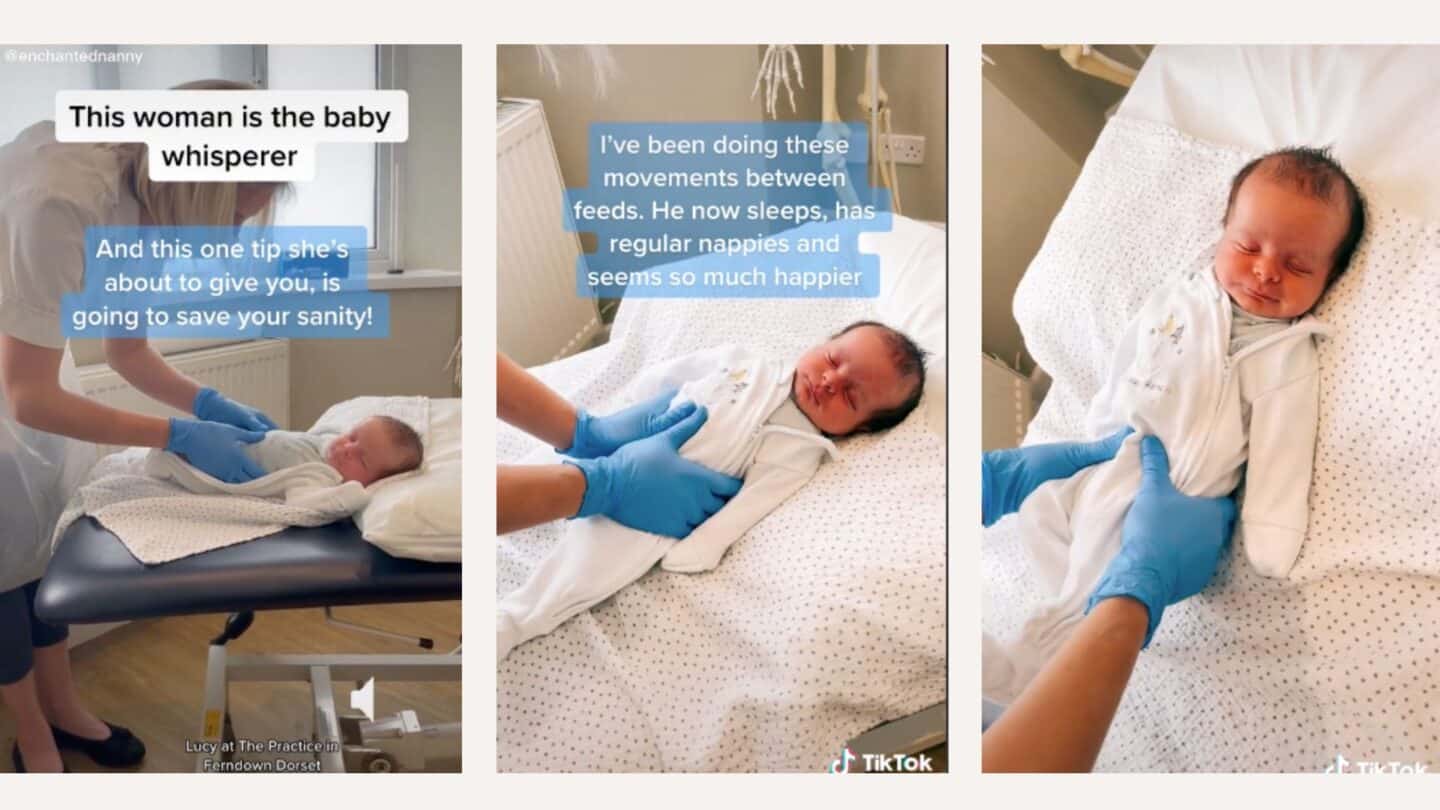Colicky baby? Try this mesmerizing TikTok hack
Move aside, bicycle legs.

@enchantednanny/TikTok
In This Article
If you’ve ever had a newborn with colic, you know just how helpless it can feel to watch your tiny infant scream, cry and writhe in pain day in, day out. Colic is notoriously tough to treat. Sure, there are gas drops and bicycle legs, warm baths and endless rocking, but what happens if those don’t work?
TikTok user @enchantednanny has an answer. Filming from inside a clinic room, she shows how an osteopath practitioner, Lucy, helps the high-profile nanny and mom of four’s infant son create movement and space in his abdomen to promote better digestion and relieve gas. The now-viral video has clearly resonated with parents everywhere—it’s been liked more than 2.2 million times.
It’s all about the figure-eight motion.
@enchantednanny #goodtoknow #newbornbaby #newborntips #colickybaby #newmum #momtobe ♬ original sound – The Enchanted Nanny
Watch as Lucy gently moves the baby’s belly and hips from side to side—and spy his content little face! As she works, Lucy explains the mechanisms at play. “Holding with a nice, wide grip, you’re always going clockwise as you’re moving with them. And you just let them move with you,” she shares. “You’re creating movement. And if tummies don’t have movement, then the milk gets the chance to move too slowly through there. And then it can cement and produce wind in their tummies, and that is painful. So anything you can do to help move the milk round is going to help.”
The mesmerizing movement seems to help. “I’ve been doing these movements between feeds. He now sleeps, has regular nappies and seems so much happier,” comments @enchantednanny.
As for the effectiveness of bicycle legs for colicky babies, where you lift and pedal your baby’s legs in circles close to their belly? That can work too, but not all the time, Lucy says. “Now a lot of people will talk about bicycle legs and bringing the legs up, and actually, if they’re in discomfort, that can be helpful, but in between times, you want to get as much space in the tummy as possible because space gives everything a chance to move around.”
Lucy goes onto explain that before babies are able to start crawling and walking, caregivers need to help them create space for digestion in their bodies by assisting them with movement until they’re able to move around more themselves. And maybe even well after.
“We took him to see Lucy at 4 weeks old and never looked back. I still do this for him now if ever he’s constipated or gassy,” adds @enchantednanny. “He’s nearly 11 months [old] and it still works like a charm.”
What causes colic?
It’s a myth that gas causes colic: Some colicky babies also have gas due to the amount of air they swallow when crying—but it’s not the gas that’s behind the colic. In truth, doctors don’t know what causes colic: It could be related to digestive problems or a sensitivity to something in the breast milk or formula they’re drinking. It could also be related to an infant’s sensitivity to the sights and sounds of their environment. Colic typically goes away by the time a baby is 3 or 4 months old.
How to tell if your baby has colic
Colic is typically diagnosed by the 3/3/3 rule: When an infant under 3 months of age cries for more than three hours, more than three days a week.
Additional signs your infant has colic are listed below:
- A regular period of nonstop, inconsolable crying, typically late in the day
- High-pitched crying or screaming bouts that last one to three hours or more
- A red face or pale skin around the mouth
- May pull in their legs, stiffen their arms, arch their back or clench their fists when crying
- A healthy and happy disposition at all other times of the day
How is colic treated
There is no proven medication or treatment to “cure” colic, but there are techniques, like the one in the video, that can be used to reduce colic symptoms.
If you’re concerned about your baby’s crying, speak to your child’s pediatrician about changing your baby’s formula or eliminating certain allergens from your diet if you’re breastfeeding (like dairy or eggs). You can also ask them for advice on offering baby probiotics. A pediatrician can also recommend an osteopath or craniosacral therapist who can give you more physical therapy tips to try.


